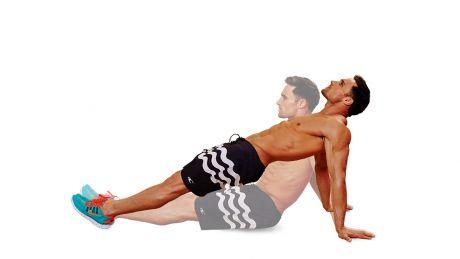How To Do The Reverse Plank
This plank variation is the bridge to a better back

In This Series
- The Classic Plank
- 30-Day Plank Challenge
- Side Plank
- Reverse Plank
- Plank Jack
- Body Saw
- Plank Shoulder Tap
- Walking Plank
- Superman Plank
- RKC Plank
It’s a story as old as time. You start off planking the classic way, and for while, it’s enough. But after a couple of weeks, you start to want more. You see new, exciting planks all around you and wonder why you can’t get a piece of that action.
Luckily, you can, starting by reversing the plank process entirely. Building the reverse plank into your exercise regime will help ensure that none of your core muscles get off lightly.
Reverse Plank Benefits
Like all plank variations, the reverse plank is an excellent way to strengthen your core. It’s especially good for the muscles in your lower back, your hamstrings and your glutes, but if you are properly braced, your abs will also feel the pinch.
If you have lower back troubles, a properly performed reverse plank could ease the pain by strengthening the core muscles. However, if you’re not doing it right and feel back or neck pain during the exercise, start with an easier variation first, like a regular plank.
How To Do The Reverse Plank
Start by sitting on the floor with your legs out in front of you. Put your hands on the ground palms down just behind and outside your hips. Then push up and lift your body until it forms a straight line from head to toe.
Keep your arms and legs straight and brace your abs. Just as with every type of plank, don’t let yourself droop. If you can’t hold the position for 30 seconds, try supporting yourself on your forearms rather than with straight arms at first. A saggy plank is of no benefit at all.
Reverse Plank Variation
For those who want to add a little more activity into their workout, you can easily transition from the reverse plank into a set of straight bridges. It involves the same positions, but instead of holding your body up in the plank pose, you keep thrusting up and down. A couple of sets of 20-25 bridges and you’ll yearn for stationary exercise once again.
Get the Coach Newsletter
Sign up for workout ideas, training advice, reviews of the latest gear and more.

Nick Harris-Fry is a journalist who has been covering health and fitness since 2015. Nick is an avid runner, covering 70-110km a week, which gives him ample opportunity to test a wide range of running shoes and running gear. He is also the chief tester for fitness trackers and running watches, treadmills and exercise bikes, and workout headphones.









